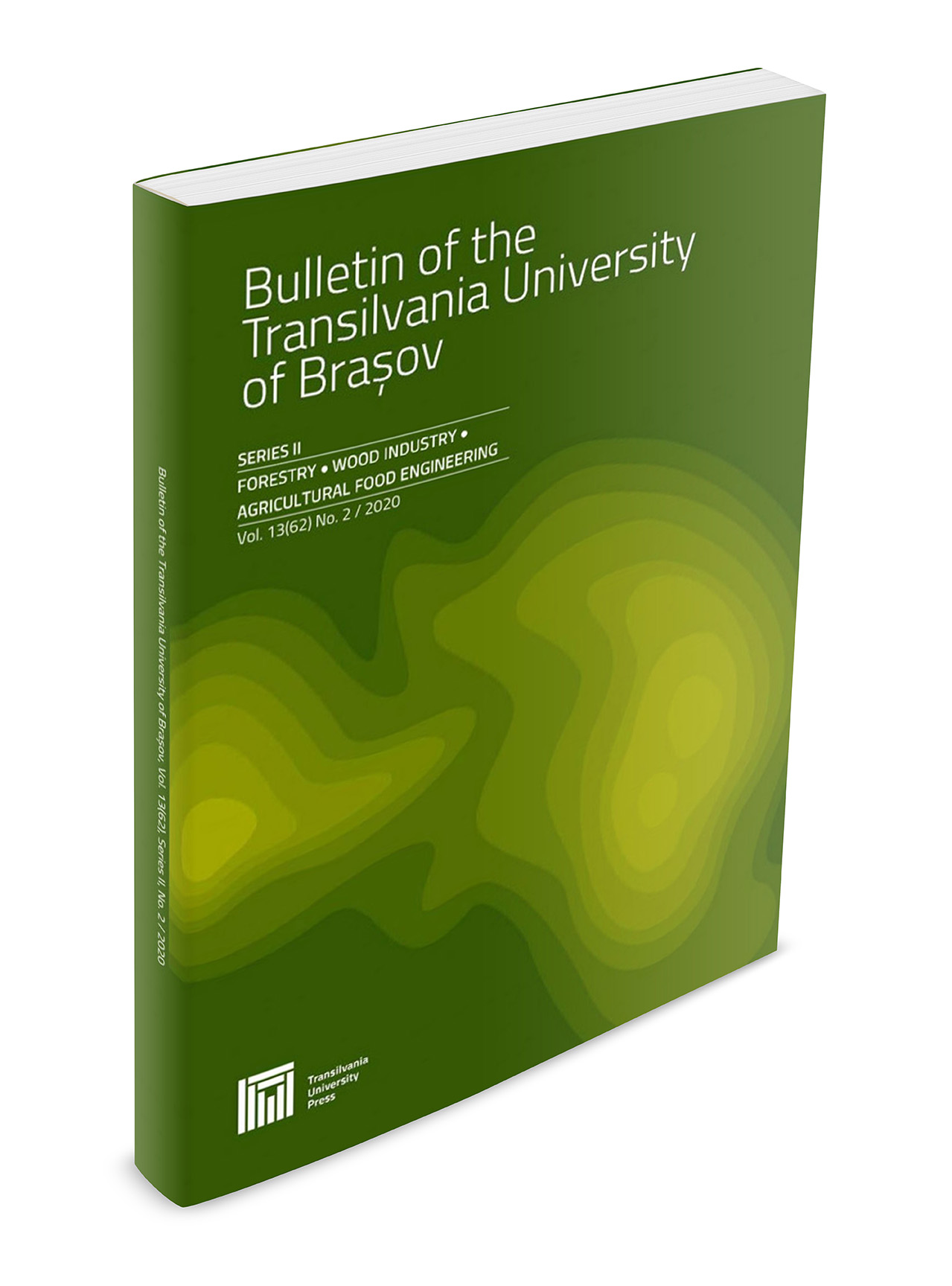Evaluation of Environmentally Friendly Plywood Made Using Glutaraldehyde-Modified Starch as the Binder
DOI:
https://doi.org/10.31926/but.fwiafe.2022.15.64.2.5Keywords:
plywood, composite, starch, binderAbstract
A standard resin system used in wood-based panel preparation was formaldehyde-based glue, which was believed to have fatal effects on the environment and human health due to the release of free formaldehyde. Therefore, the study's objective was to evaluate the physical and mechanical properties of experimental plywood made using glutardialdehyde-modified starch as an environmentally friendly binder. Two gelatinization methods were used: sodium hydroxide (NaOH) and hot water. Plywood was manufactured using starch modified with 10, 20, and 30% glutardialdehyde. The physical testing revealed that the plywood density value was around 0.34 to 0.38 g/cm3, the moisture content ranged between 19.34 and 23.67%, water absorption was between 24.56 and 71.60%, and thickness swelling between 1.18 and 7.27%. It was found that plywood made using NaOH-gelatinized glutardialdehyde-modified starch binder has higher density and lower moisture content, which are advantages for this composite type. In mechanical testing, it was found that plywood made using NaOH-gelatinized glutardialdehyde modified starch binder has higher overall strength than plywood using hot water-gelatinized glutardialdehyde modified starch binder, measured by their bending strength and tensile shear strength. The MOR values of manufactured plywood were found to range from 124.88 to 179.32 N/mm2, MOE from 8027.50 to 10603.90 N/mm2, and tensile shear strength from 651.64 to 1385.16 N/mm2. The highest glutardialdehyde: starch ratio, which is 30% of glutardialdehyde used based on the weight of starch, showed better overall plywood physical and mechanical properties. The results showed that glutardialdehyde-modified starch could be used as an alternative binder in plywood manufacturing.



